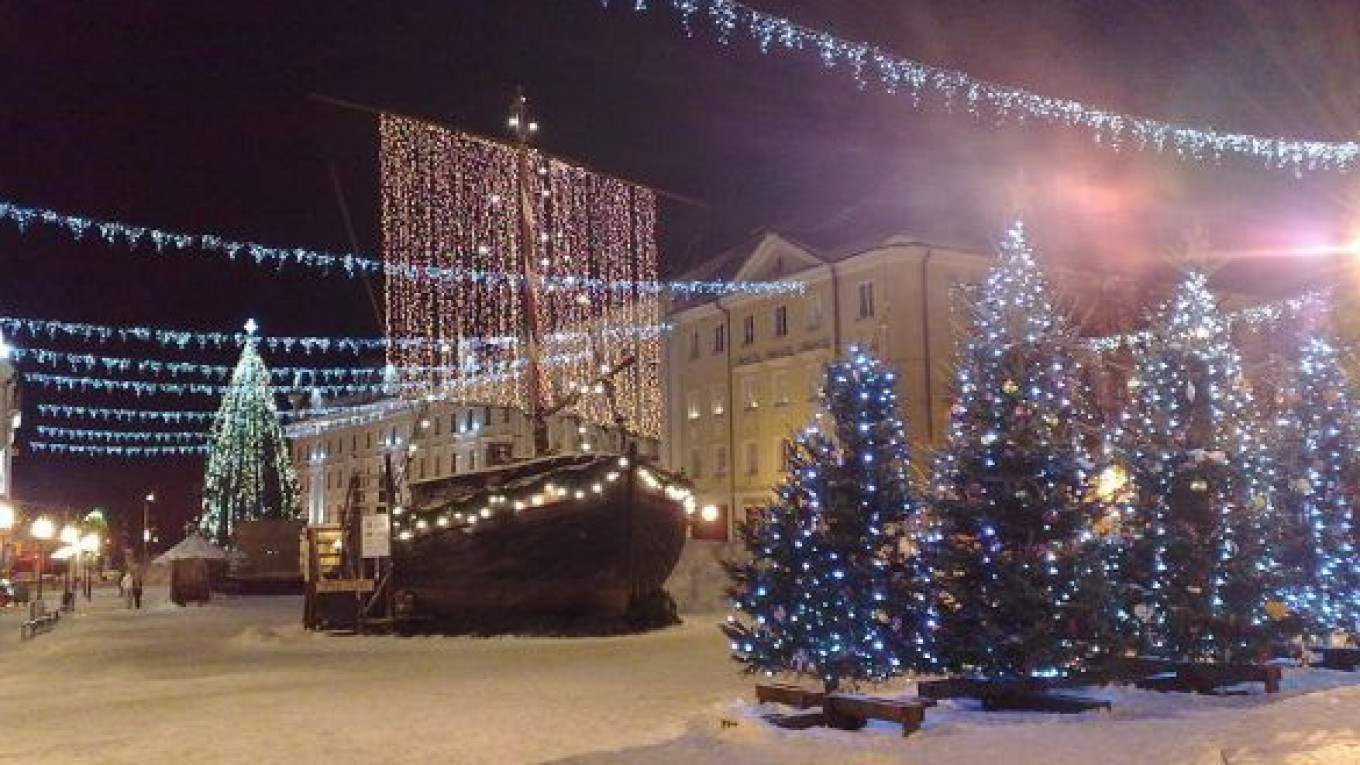It takes only a two-and-a-half-hour smooth drive (185 kilometers) to get from Estonia's capital Tallinn to the town of Tartu, even though the south-east route crosses almost all of this small Baltic country.
The bus speeds past the country's timeless landscapes of snow-covered forests and fields, with the occasional wooden house to be spied.
Based around Tartu University, with a large proportion of its population being students and teachers, the town is seen as the nation's intellectual capital. In winter, the large number of young people makes the town perhaps more vibrant and full than in summer, when many are on holiday elsewhere.
A Page of History
Located on the banks of the Emajogi River (Mother River), Tartu is Estonia's second-largest city and the Baltics' oldest, being first mentioned in historical documents dating back to 1030. It is the cradle of Estonian culture, where the country's song festivals — an important tradition that played a major role in uniting the nation — were born. Tartu is also the home of Estonian theater and to some extent, the Estonian state.
The main building of Tartu University, a six-columned, classical affair, is located on ?–likooli (University Street) in the town's center. Founded in 1632 by Swedish king Gustavus Adolphus, it's the country oldest. Now one of the world's top 400 universities, it effectively connects the past and future, as well as Tartu and the rest of the world.
Town Hall Square (Raekoja plats) is Tartu's center, having historically been the main trading area of the settlement between the castle on Toome Hill and the riverside port on the Emajogi. The buildings in the center mostly date back to the 18th century, older constructions having been destroyed by the wars and fires that swept the town from time to time.
Since 2008, Town Hall Square has been adorned by the Kissing Students fountain, which stands right in front of the Town Hall building and depicts the figures of a young man and woman embracing. Sculptor Mati Karmin was reportedly inspired by the sight of his nephew kissing a girl in the rain.
Although it might not seem like the first choice for a new installation on the medieval town's main square, it has become a modern symbol of Tartu and one of its main attractions, judging by the groups of tourists having their photo taken in front of it at any time of the day.
The Town Square, with its cafeterias and souvenir shops, has a Christmas tree and a large snow mound, which is popular among children who clamber up it and ride down it on boards or simply crawl over it.
Toome Hill, located directly behind the Town Hall, is home to a number of monuments, including one to King Adolphus that was destroyed by the Soviets in 1950 and restored after Estonia regained independence, the ruined red-brick Dome Cathedral dating back to the late 13th century and the university-related installations and museums such as the History Museum of Tartu University, the old Tartu Observatory and the Old Anatomical Theater.
Back in town, an interesting piece of art is "Father and Son," a sculpture group showing nude, same-sized models of its author, Tartu-born sculptor Ulo Ouna (1940-1988) and his 18-month-old son Kristjan. Located right on the sidewalk, just a brief walk from the Town Hall Square, the sculpture looks unlikely in the summertime, and completely surreal when seen amid snow in winter.
Conceived in 1977 and cast in bronze ten years later, the sculpture was installed on Tartu on Child Protection Day on June 1, 2004 on K????ni, the city's main shopping street.
New Old Manors
Estonia is a land rich in historic manor houses, about 100 of which have been renovated and converted to luxury hotels.
According to the website www.mois.ee, devoted to Estonian manors, some of them date to the Middle Ages, but the mass construction of manor complexes began to a wide extent in the 1760s and lasted for more than a century and a half until World War I.
In the early 20th century, there were 1,250 manors in Estonia, but by 2005 this number had dropped to 414. According to the Estonian Tourist Board, nowadays there are about 200 manor houses under state protection as architectural monuments and 100 in active use.
Estonian manors are where closeness to nature is combined with luxury appropriate to the aristocrats who once owned them. During the Soviet era many of the manors fell into disrepair or were used as schools or workers' hostels.
Kau Manor is located some 40 minutes from Tallinn, 6 kilometers off the highway to Tartu. Located in the Koue parish and first mentioned in 1241, it is one of the oldest Estonian manors, whose first known owner was a vassal of the Danish King Gerhardus de Kouwe (Gerhard from Kau).
Related articles:
A Message from The Moscow Times:
Dear readers,
We are facing unprecedented challenges. Russia's Prosecutor General's Office has designated The Moscow Times as an "undesirable" organization, criminalizing our work and putting our staff at risk of prosecution. This follows our earlier unjust labeling as a "foreign agent."
These actions are direct attempts to silence independent journalism in Russia. The authorities claim our work "discredits the decisions of the Russian leadership." We see things differently: we strive to provide accurate, unbiased reporting on Russia.
We, the journalists of The Moscow Times, refuse to be silenced. But to continue our work, we need your help.
Your support, no matter how small, makes a world of difference. If you can, please support us monthly starting from just $2. It's quick to set up, and every contribution makes a significant impact.
By supporting The Moscow Times, you're defending open, independent journalism in the face of repression. Thank you for standing with us.
Remind me later.


